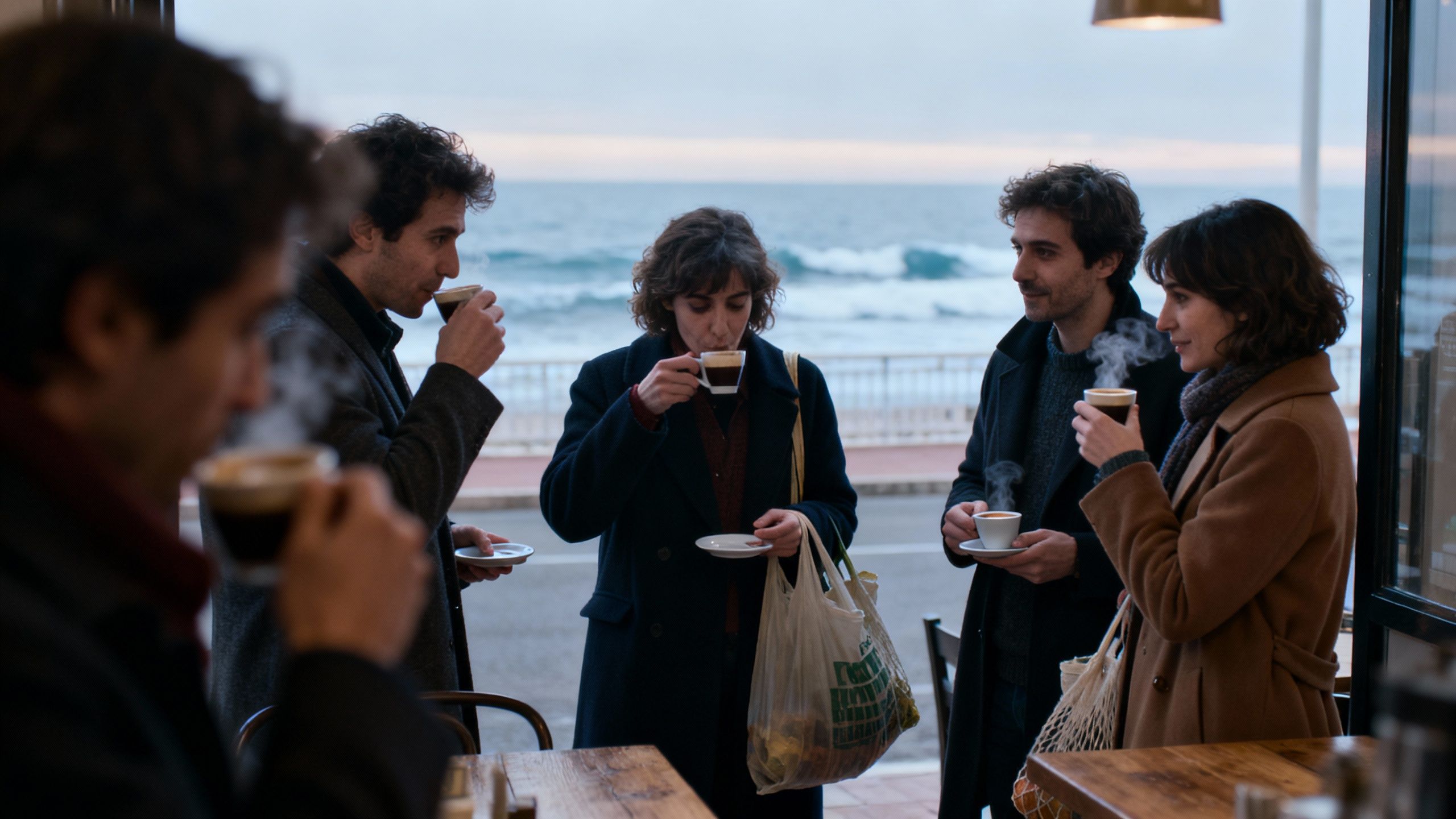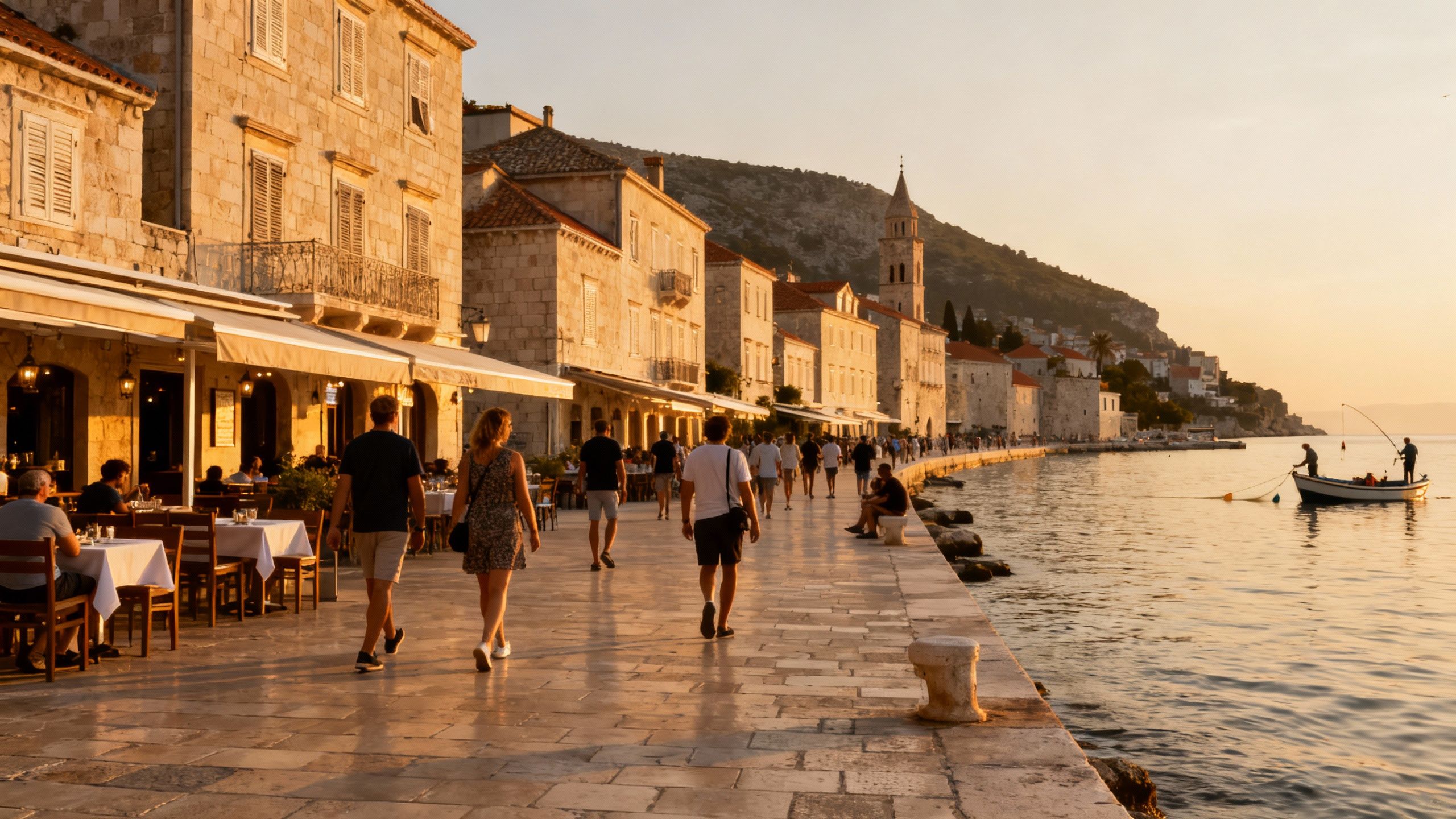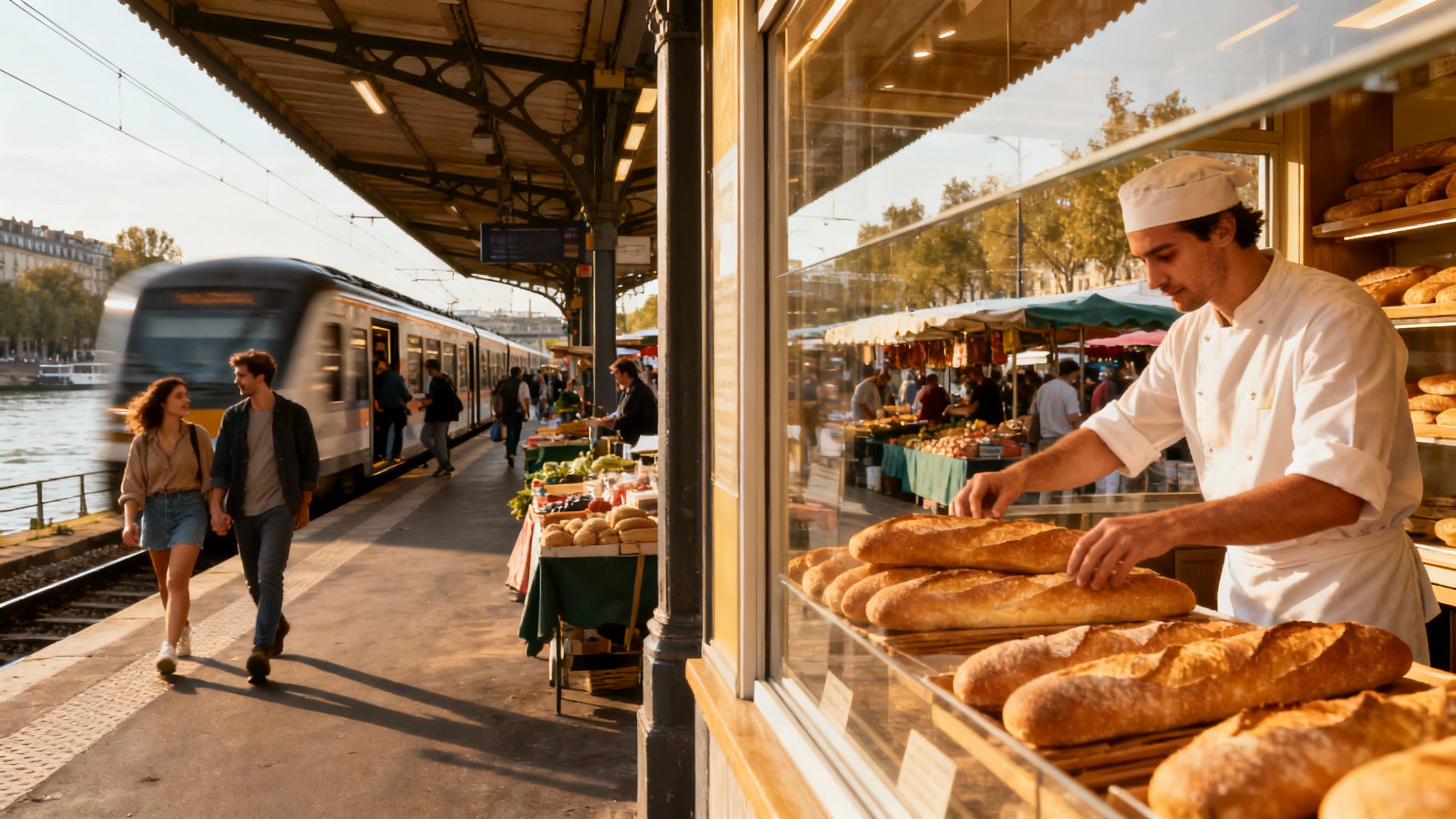Croatia: Where Coastal Romance Meets Hard Data
Coastal demand has driven double‑digit growth in many Croatian counties; match seasonal lifestyle with data, and budget for new taxes and rental rules.
Imagine sipping espresso at Café U Dvorištu in Split’s Varoš as fishermen unload the morning catch — then, two blocks away, finding a stone apartment with sea views priced below what a similar flat would cost in Nice. Croatia feels both timeless and unsettled: coastal towns full of life each summer, quiet olive groves inland, and a market that has surprised buyers with sharp, uneven rises in asking prices over the last three years.
Living the Croatia lifestyle
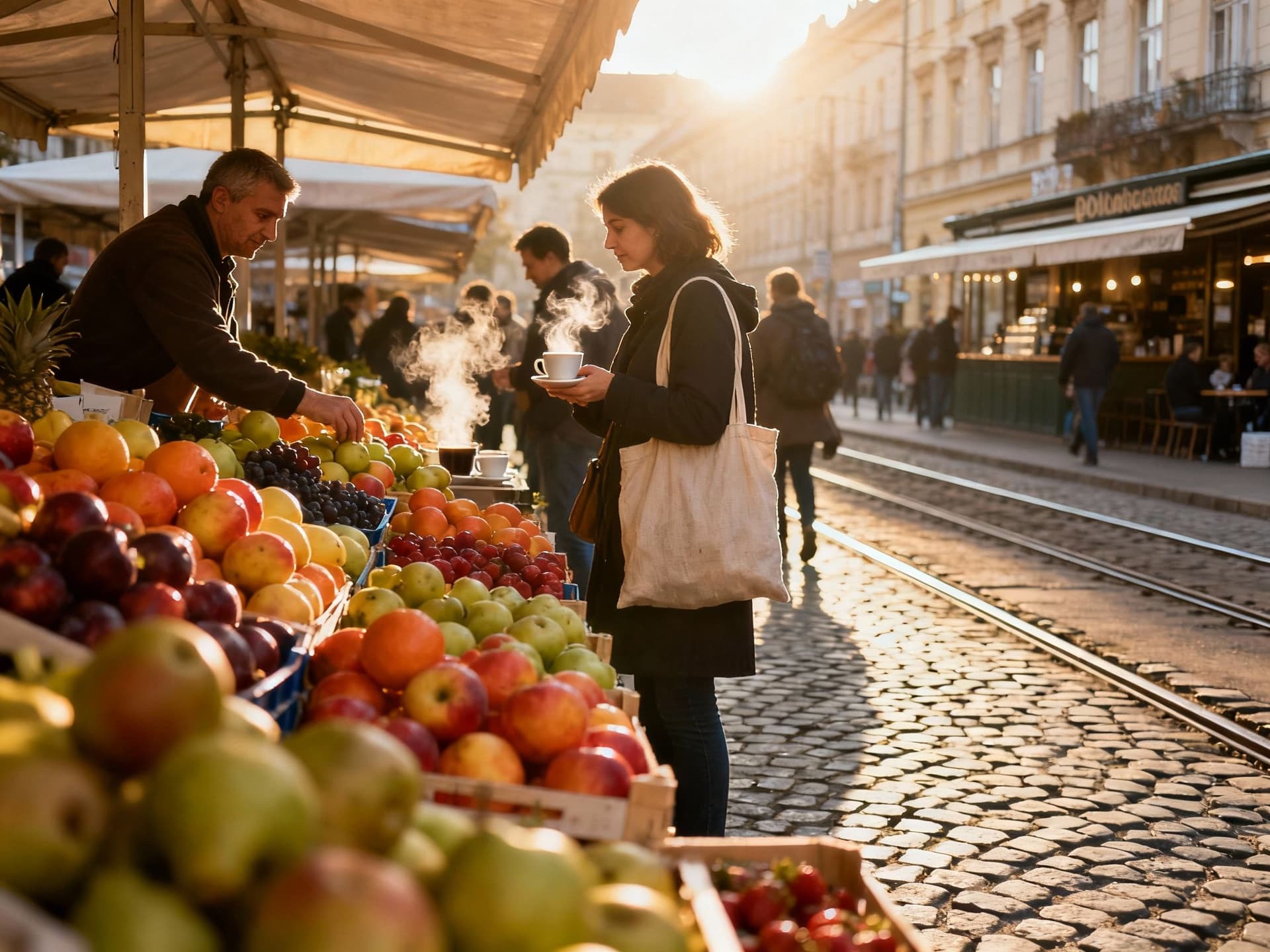
Daily life in Croatia moves with the tide. Mornings are market-driven — Dolac market in Zagreb or Hvar’s fruit stalls — afternoons favour beaches or siestas, and evenings gather around konobas and small plates. The Adriatic sets a seasonal tempo: the coast hums from May to September; the interior slows but offers year-round rhythms of small-town life and seasonal festivals.
Coastlines and old towns: Split, Dubrovnik, Hvar
Walk Diocletian’s Palace at dusk in Split, cross Stradun in Dubrovnik before the cruise crowds arrive, or trade the nightlife of Hvar town for a quiet stone house in Stari Grad. These places sell a vision: cobbled streets, small family-run restaurants, immediate access to sea life. That vision has translated into buyer demand and price pressure — particularly for flats with sea views and restored stone houses.
Inland life: Istria, Zagorje, Slavonia
Istria blends Italianate cafés and truffle routes; Zagorje brings vineyards and weekend escapes from Zagreb; Slavonia offers large parcels and lower price per square metre. For buyers seeking quieter, year-round value, these regions often deliver better price stability and more space for renovation or agricultural uses.
- Lifestyle highlights: Dolac Market (Zagreb); Riva promenade (Split); Stari Grad Plain (Hvar); Motovun truffle restaurants (Istria); Zlatni Rat day trips (Brač); local konobas and olive oil tastings.
Making the move: practical considerations that protect the lifestyle
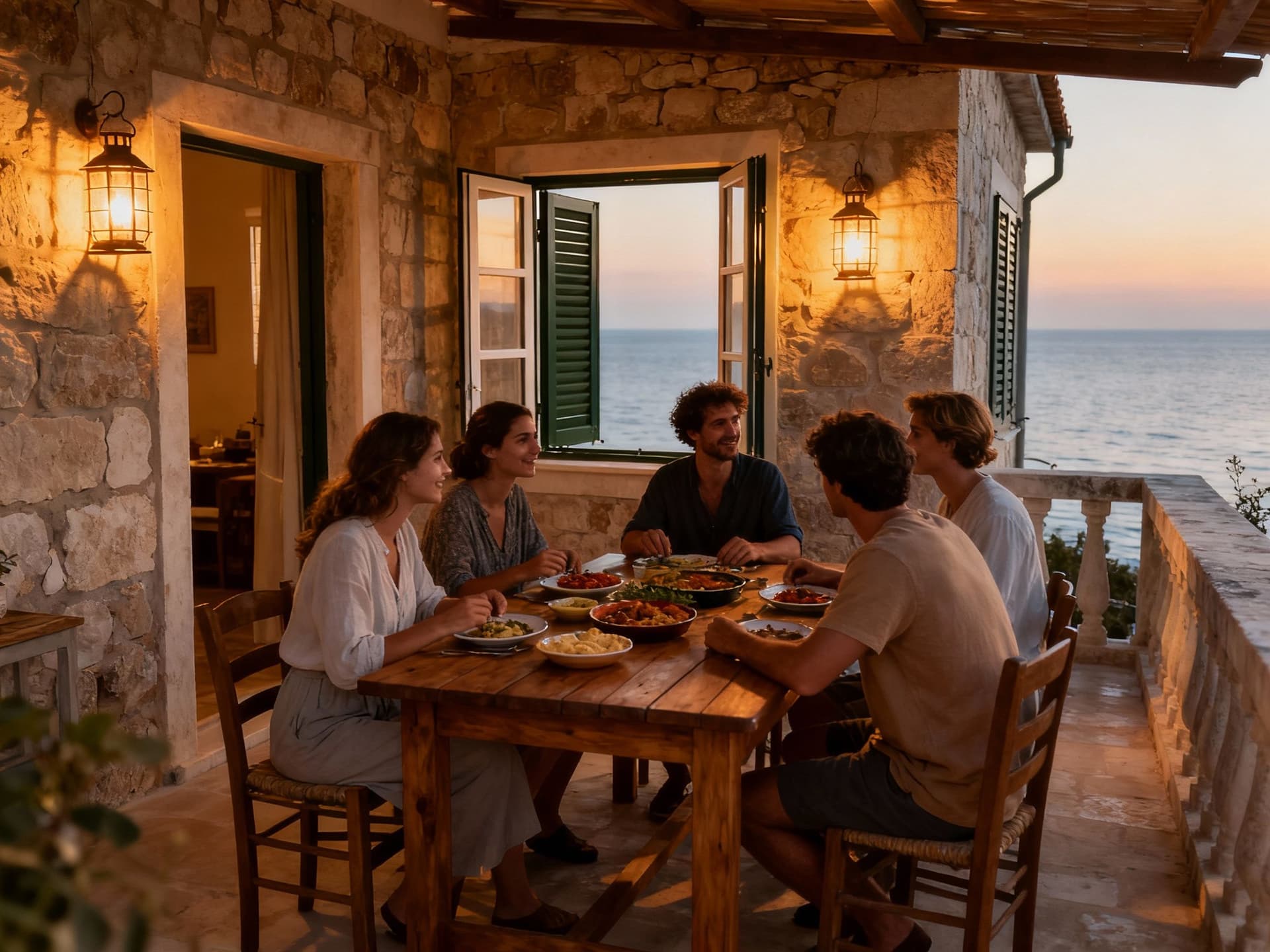
The dream — coastal cafes, village markets, sea views — is real. The practical side is uneven. Price growth has been strong and regionally variable, and new regulation on short‑term rentals and property taxation has changed returns and holding costs for investors. Understanding local data and timing matters more than ever.
Which property types are moving fastest
Existing apartments and holiday homes on the Adriatic have outpaced new builds in year‑on‑year growth. Coastal, sea‑view units and well‑located stone houses command premiums. Data from national statistics and market portals show double‑digit annual increases in many coastal counties — a clear signal for buyers to match lifestyle expectations with realistic cost assumptions.
Regulation that changes the numbers: short‑term rental clampdowns and new property taxes
Since 2024 Croatia has signalled policy aimed at limiting short‑term tourist rentals and shifting more tax onto property to ease housing shortages. These moves reduce some investor arbitrage but improve long‑term community outcomes. For lifestyle buyers who intend to occupy or rent long‑term, the changes lower competition from pure short‑term investors; for short‑term rental investors, they increase compliance costs and unpredictability.
- Practical steps to reconcile lifestyle aims with market realities: 1. Match region to seasonality: buy inland if you want year‑round life; buy coastal if you accept seasonal peaks. 2. Verify asking vs transaction prices: ask local agents for recent sale comparables not just listings. 3. Factor new property levies and short‑term rental rules into yield calculations. 4. Budget for renovation standards in stone houses (insulation, wiring, permits). 5. Check registry records for encumbrances and coastal-zone restrictions.
Insider knowledge: what expats wish they’d known
Expat homeowners often tell the same story: they fell for a street, a cafe, a view, and then learned that seasonal rhythms, municipal rules, and local community expectations shaped daily life more than marketing photos. Small cultural details — garbage collection days, local market hours, and festival weeks — materially affect how a property fits your intended lifestyle.
Language, community and everyday integration
Croatian is part of daily life in smaller towns; English is widespread in tourist hubs. Learning basic phrases opens doors. Getting involved in local associations — a fishing cooperative in Dalmatia or an olive‑oil collective in Istria — accelerates acceptance and reveals off‑market opportunities that listings do not show.
Long-term outlook: inflation, construction costs and what keeps value
Construction costs and inflation have pushed new‑build prices up; meanwhile, scarcity of restored, well‑located stone houses sustains premiums. Expect value to correlate with accessibility (marinas, airports), municipal planning (zoning, coastal protection), and property adaptability (long‑term rental vs holiday use).
- Red flags to watch for (local, lifestyle and financial): • Properties listed without recent sale comparables. • Coastal lots with unclear building permits. • High short‑term rental density in a small town (community backlash risk). • Sellers who pressure for quick, cash‑only deals without documented chain of title. • Large seasonal utilities or communal charges not disclosed in listings.
- A simple due‑diligence sequence that preserves lifestyle outcomes: 1. Visit in shoulder season (April/May or October) to feel year‑round life. 2. Request notarised sale comparables from the last 12 months in the neighbourhood. 3. Commission a local technical survey and check coastal zoning. 4. Calculate total holding cost with announced property taxes and any short‑term rental compliance. 5. Use a reputable local attorney to confirm title and encumbrances before deposit.
Conclusion: buying the life, not the listing
If your aim is a particular life — sea‑front evenings, village markets, or vineyard weekends — let that life guide the search. Use official data (DZS), current reporting (Reuters), and local sale comparables to translate lifestyle desire into sensible offers. Meet local agents who live the rhythm of the place: they’ll point to streets where neighbours sell to locals, months when prices soften, and renovation tradespeople who know the quirks of stone and sea air. Fall in love deliberately; buy with facts.
Danish investment specialist who relocated to Costa del Sol in 2015. Focuses on data-driven market timing and long-term value for Danish buyers.
